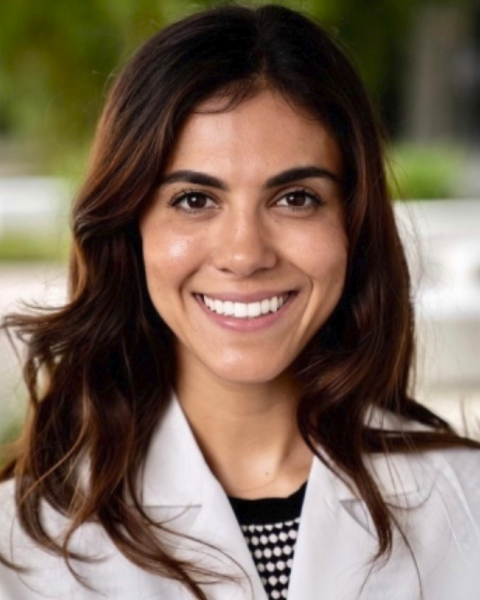PQA 01 - PQA 01 Lung Cancer/Thoracic Malignancies and Diversity, Equity and Inclusion in Healthcare Poster Q&A
2005 - Recent Industry Payment Trends across Radiation Oncology Residency Program Leadership
Sunday, September 29, 2024
2:45 PM - 4:15 PM ET
Location: Hall C
Screen: 5

Rojine Ariani, MD, MS
UCLA David Geffen School of Medicine/UCLA Medical Center
Pasadena, CA
Presenter(s)
R. Ariani, L. Valle, M. L. Steinberg, and A. Raldow; Department of Radiation Oncology, University of California, Los Angeles, Los Angeles, CA
Purpose/Objective(s): The landscape of industry funding to radiation oncology residency program leadership is poorly understood, and may be a useful evaluation metric for prospective applicants or accrediting bodies. This study examines recent payment trends among Charis, Program Directors (PDs), and Associate Program Directors (APDs). We hypothesize that payments will vary by leadership role, gender, academic rank, geographic region, and years of post-residency experience. Materials/
Methods: Chairs, PDs, and APDs for each program were identified from the Association of Residents in Radiation Oncology (ARRO) Directory. Gender, academic rank, geographic region, and years of post-residency experience for each individual were then obtained from program websites. We extracted industry payments to leaders in 2021 and 2022 from the U.S. Centers for Medicare & Medicaid Services open payments database. Kruskal-Wallis and Mann-Whitney U tests were used to compare payment differences between groups.
Results: Of 86 Chairs, 89 PDs, and 48 APDs identified, 24 (28%), 14 (16%), and 8 (17%) were paid, respectively. Among all Chairs, 74 (86%) were male and 12 (14%) were female. PDs consisted of 50 (56%) males and 39 (44%) females, while APDs consisted of 21 (44%) males and 27 (56%) females. Leading ranks of Chairs, PDs, and APDs paid were Professor (87.5%), Associate Professor (50%), and Assistant Professor (62.5%), respectively. Median years of post-residency experience for Chairs, PDs, and APDs who were paid were 21, 14.5, and 9, respectively (p=0.015). Payments totaled $15,229,066 during 2021-2022, increasing +90.1% from 2021 to 2022 ($5,250,065 vs $9,979,001). Nonetheless, mean ($128,728 vs $262,605; p=0.13) and median payments ($23,930 vs $69,090; p=0.14) by year were comparable. Majority of payments were research-related (96.8%), followed by ownership (3.1%), consulting fees and food/beverage (<1%). PDs received the highest mean payment compared to Chairs and APDs ($518,323 vs. $274,320 vs. $173,609; p=0.09), while APDs had the highest median payment compared to PDs and Chairs ($68,377 vs $55,515 vs $38,753; p=0.57). Midwest program leadership received $6,466,541, representing the majority (42.5%) of payments across all regions. Multiple regression on log-transformed payments showed a significant regional effect (+244.3%; p=0.04, Midwest vs. Northeast). Males received more total payments than females ($11,143,458 vs $4,061,028), though mean ($216,816 vs $287,630; p=0.58) and median ($72,915 vs $7,785; p=0.13) payments were not statistically different. Of Chairs paid, 21 (87.5%) were male and 3 (12.5%) were female. PDs paid had even gender distribution, with 7 (50%) males and 7 (50%) females. Of APDs paid, 6 (75%) were male and 2 (25%) were female.
Conclusion: Industry payments to radiation oncology residency program leadership vary by role, gender, and geographic region. More detailed analysis and further investigation of contributive factors is warranted to improve equity and transparency.
Purpose/Objective(s): The landscape of industry funding to radiation oncology residency program leadership is poorly understood, and may be a useful evaluation metric for prospective applicants or accrediting bodies. This study examines recent payment trends among Charis, Program Directors (PDs), and Associate Program Directors (APDs). We hypothesize that payments will vary by leadership role, gender, academic rank, geographic region, and years of post-residency experience. Materials/
Methods: Chairs, PDs, and APDs for each program were identified from the Association of Residents in Radiation Oncology (ARRO) Directory. Gender, academic rank, geographic region, and years of post-residency experience for each individual were then obtained from program websites. We extracted industry payments to leaders in 2021 and 2022 from the U.S. Centers for Medicare & Medicaid Services open payments database. Kruskal-Wallis and Mann-Whitney U tests were used to compare payment differences between groups.
Results: Of 86 Chairs, 89 PDs, and 48 APDs identified, 24 (28%), 14 (16%), and 8 (17%) were paid, respectively. Among all Chairs, 74 (86%) were male and 12 (14%) were female. PDs consisted of 50 (56%) males and 39 (44%) females, while APDs consisted of 21 (44%) males and 27 (56%) females. Leading ranks of Chairs, PDs, and APDs paid were Professor (87.5%), Associate Professor (50%), and Assistant Professor (62.5%), respectively. Median years of post-residency experience for Chairs, PDs, and APDs who were paid were 21, 14.5, and 9, respectively (p=0.015). Payments totaled $15,229,066 during 2021-2022, increasing +90.1% from 2021 to 2022 ($5,250,065 vs $9,979,001). Nonetheless, mean ($128,728 vs $262,605; p=0.13) and median payments ($23,930 vs $69,090; p=0.14) by year were comparable. Majority of payments were research-related (96.8%), followed by ownership (3.1%), consulting fees and food/beverage (<1%). PDs received the highest mean payment compared to Chairs and APDs ($518,323 vs. $274,320 vs. $173,609; p=0.09), while APDs had the highest median payment compared to PDs and Chairs ($68,377 vs $55,515 vs $38,753; p=0.57). Midwest program leadership received $6,466,541, representing the majority (42.5%) of payments across all regions. Multiple regression on log-transformed payments showed a significant regional effect (+244.3%; p=0.04, Midwest vs. Northeast). Males received more total payments than females ($11,143,458 vs $4,061,028), though mean ($216,816 vs $287,630; p=0.58) and median ($72,915 vs $7,785; p=0.13) payments were not statistically different. Of Chairs paid, 21 (87.5%) were male and 3 (12.5%) were female. PDs paid had even gender distribution, with 7 (50%) males and 7 (50%) females. Of APDs paid, 6 (75%) were male and 2 (25%) were female.
Conclusion: Industry payments to radiation oncology residency program leadership vary by role, gender, and geographic region. More detailed analysis and further investigation of contributive factors is warranted to improve equity and transparency.
